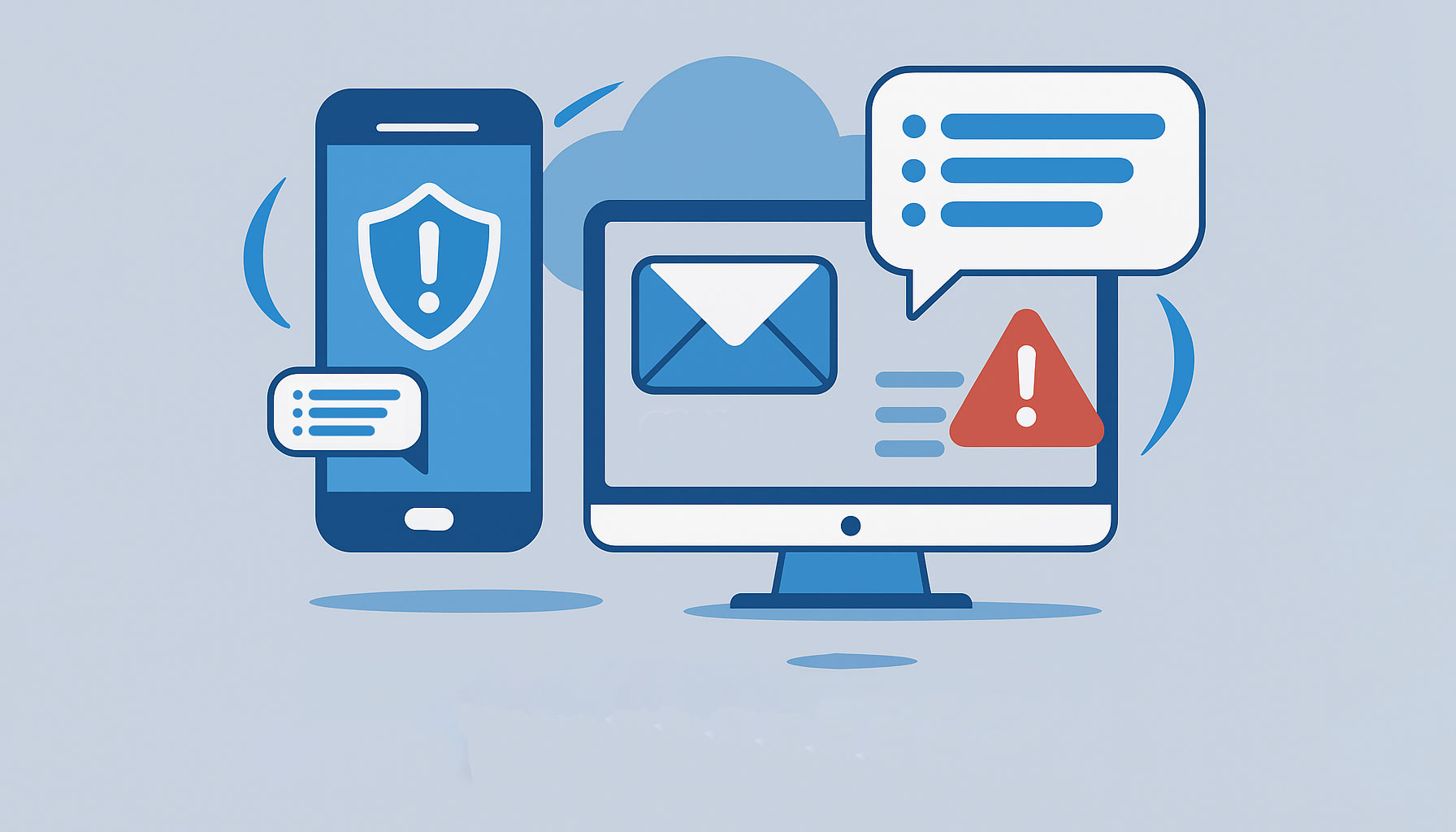Estimated Reading Time: 4 - 5 minutes
Multi-factor authentication (MFA) has become a critical security measure for modern businesses. By requiring users to provide two or more forms of verification before accessing systems, MFA is considered one of the most robust lines of defense against cyber threats. But while the concept is strong, not all MFA methods offer the same level of protection. Some are much easier for attackers to bypass, leaving your business exposed.
In this post, we explore the most common MFA methods in use today, highlight their weaknesses, and suggest what you can do to strengthen your authentication strategy.
SMS-Based Authentication
One of the most widely used forms of MFA is SMS-based authentication. With this method, a one-time passcode (OTP) is sent to the user's mobile phone via text message. While it’s easy to implement and familiar to most users, it’s also one of the most vulnerable methods.
The biggest risk comes from SIM swap attacks, where a criminal tricks a mobile phone provider into transferring a number to a new SIM card under their control. Once they have access to the number, any codes sent via SMS can be intercepted. Additionally, man-in-the-middle attacks and malware can be used to hijack these codes. Despite its popularity, SMS-based authentication is no longer recommended as a primary method for securing sensitive systems.
Email-Based Authentication
Similar to SMS, email-based MFA involves sending a verification code to a registered email address. This is another method that appears secure on the surface but comes with significant risks. Email accounts are high-value targets for hackers and are frequently attacked through phishing campaigns or credential stuffing.
Once an attacker gains access to your email inbox, they may be able to reset passwords, receive MFA codes, and compromise multiple services at once. For businesses that rely on email MFA without any additional security measures (such as IP restrictions or device management), this can become a single point of failure.
Security Questions
Security questions are still used in some systems as a backup method for verifying identity - especially during account recovery. However, they are widely regarded as one of the weakest links in any authentication process.
The problem lies in the fact that most of the answers to these questions - like your mother’s maiden name or your first school - can often be found online or through social media. Attackers may also use social engineering techniques to extract this information from users or customer support teams. Security questions are outdated and should not be relied on for MFA in modern environments.
What’s the Strongest Form of MFA?
The most secure MFA solutions today involve a combination of hardware tokens (such as USB security keys) and biometric verification. Security keys generate unique authentication codes or require a physical tap to confirm access. Because they are hardware-based, they are immune to phishing, SIM swapping, and other remote attacks.
When paired with biometrics like fingerprint scanning or facial recognition, this method provides two distinct and strong authentication factors: something the user has (the token), and something the user is (the biometric). This creates a much more resilient defense against unauthorised access.
Want help protecting your business with better MFA?
Whether you’re managing IT security for a small business or want to make sure your team is using the most secure multi-factor authentication, we can help. At telanova, we support businesses across Ascot, Bracknell, Wokingham, Reading and the wider Berkshire area with expert IT and cybersecurity services.
Learn more about our IT security support or give us a call on 01344 989 530 to chat about how we can help make your business more secure.
Frequently Asked Questions (FAQs)
What is the safest MFA method?
The safest MFA method combines hardware security keys (like YubiKey) with biometric authentication. This offers strong protection against phishing, SIM swaps, and credential theft.
Is SMS MFA better than nothing?
Yes, using SMS MFA is better than having no MFA at all. However, it’s no longer considered secure enough for protecting sensitive systems due to its vulnerability to interception and SIM swap fraud.
Should I stop using security questions?
Yes. Security questions are weak because the answers are often easy to guess or find online. They should not be used as a main form of authentication and are best avoided.
Can hackers bypass MFA?
It depends on the method. Weak MFA options like SMS or email can be bypassed by sophisticated attackers. Stronger methods like hardware tokens and biometrics are much harder to crack.
How do I know if my MFA setup is secure?
Ask an IT support provider (like telanova) to audit your current MFA configuration. We can identify gaps, recommend improvements, and help you implement a more robust solution.





